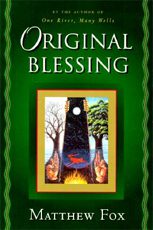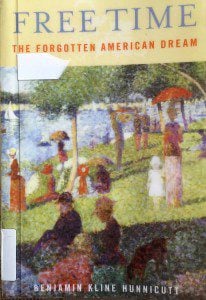I said to my soul, be still, and let the dark come upon you
Which shall be the darkness of God. As, in a theatre,
The lights are extinguished, for the scene to be changed
With a hollow rumble of wings, with a movement of darkness on darkness,
And we know that the hills and the trees, the distant panorama
And the bold imposing facade are all being rolled away —
Or as, when an underground train, in the tube, stops too long between stations
And the conversation rises and slowly fades into silence
And you see behind every face the mental emptiness deepen
Leaving only the growing terror of nothing to think about;
Or when, under ether, the mind is conscious but conscious of nothing —
I said to my soul, be still, and wait without hope
For hope would be hope for the wrong thing; wait without love,
For love would be love of the wrong thing; there is yet faith
But the faith and the love and the hope are all in the waiting.
Wait without thought, for you are not ready for thought:
So the darkness shall be the light, and the stillness the dancing.T.S. Eliot, “East Coker,” Four Quartets
This sermon marks the third leg of our four-part pilgrimage toward Christmas. Our intrepid guide for this  journey is Matthew Fox, the Episcopal priest and author of the book Original Blessing: A Primer in Creation Spirituality. To briefly review where we have traveled so far, on the first Sunday of Advent our focus was the Via Positiva, the “Positive Way” of befriending Creation. And we considered how we might conceive the task of befriending the full expanse of Creation, which extends back 13.7 billion years and includes more than 100 billion galaxies.
journey is Matthew Fox, the Episcopal priest and author of the book Original Blessing: A Primer in Creation Spirituality. To briefly review where we have traveled so far, on the first Sunday of Advent our focus was the Via Positiva, the “Positive Way” of befriending Creation. And we considered how we might conceive the task of befriending the full expanse of Creation, which extends back 13.7 billion years and includes more than 100 billion galaxies.
Last week, we reversed that trajectory to explore the Via Negativa: the “Negative Way” of befriending darkness, letting go, and letting be. In contrast to the Via Positiva’s way of addition and ever-expanding concentric circles of inclusion, we were invited to move in the opposite direction: the Via Negativa’s way of subtraction, of finding God by saying “no” to everything that distracts us from “God Alone.” In Fox’s words, “while the Via Positiva teaches us the cosmic breadth of living, of our holy relationship to stars and atom…and to blessed bodiliness, the Via Negativa open us to our divine depths” (130).
We need to spend time on both paths to different extents during different seasons of our lives. As scripture says, “For everything there is a season, and a time for every matter under heaven” (Ecclesiastes 3:1). We need to learn to practice the Via Positiva during the proverbial summers of our life: times of light, heat, sweat, activity, and lush greenness. Typically the Via Positiva comes first — growing, connecting, forming your identity and building your ego strength — which is why the “Positive Way” is the first of Fox’s four paths. But in most people’s lives, metaphorical winters also come: times of darkness, cold, shivering, stillness, and barrenness. If we are to grow and mature, we must learn to let go of our need for control, learn to trust others and God, and give ourselves permission to float down the river of the Via Negativa. As we heard in the song from Peter Mayer last week, we must learn that, “God is the river” in which our lives are immersed, so we must “let go.”
Toward the end of last week’s sermon, I gestured briefly toward the third path of the Via Creativa. On the other side of winter, just when we think new life will never come again, a season of unexpected spring begins to bloom. Fox calls this hopeful path the “Creative Way” of befriending creativity and befriending our divinity. Transitioning out of the Via Negativa, we are invited to learn to “let go even of our letting go” (172). During the metaphorical seasons of spring in our lives — the times of dawn, warmth, exuberance, dancing, and blossoming — we are invited to allow the creative impulse at the heart of the universe to be channeled through us. We are invited to partner with God the Creator in co-creating the future.
Those last few lines may sound a little abstract, absurd, or even arrogant, so allow me to elaborate. I invite you to remember the section from the sermon two weeks ago in which talked about the wondrous (even miraculous) story of “emergence”: how our Universe evolved over the course of 13.7 billion years through stages of increasing complexity — “pre-atomic, atomic, molecular, unicellular, multi-cellular, vertebrate, primate, and human.””
As one theologian has written, we humans are,
Stardust now evolved to the place that the stardust can think about itself! …We are the universe becoming conscious of itself. We are stardust that has begun to contemplate the stars. We have arisen out of the dynamics of the Earth. Four billion years ago, our planet was molten rock, and now it sings opera. Let me tell you, this is good news!
When Fox talks about the Via Creativa as an invitation to “befriend our creativity and befriend our divinity,” these are the sorts of mind-blowing insights from which he is speaking. Fox, myself, and many other proponents of views similar to Creation Spirituality believe that God isn’t “out there” someplace watching us from a distance. Instead, God is intimately within, compassionately with, and transcendently beyond all parts of the more than 100 billion galaxies in our universe, and that God has been so for all the 13.7 billion years of the Universe Story. So when Fox speaks of “befriending our creativity and befriending our divinity” he means getting in touch with and partnering with that aspect of God that is with, within, and beyond each one us. He is calling us to be as creative as God and to be creative just as every aspect of the Universe is called to be creative. Through engaging our creativity, we are invited to play our small part in that evolutionary process that has led over the course of 13.7 billion years to stages of progressively complex emergence. Fox writes that through science, “We now have an inkling of the unbelievable fertility of the universe, of the constant birthings of atoms and molecules, eggs and spermatozoa, of cells and living organisms in water and on land…” (181). And scientists are discovering increasing numbers of Earth-like planets out there.
Two weeks ago our scripture reading was from Thomas Merton’s poem “Hagia Sophia,” which also speaks about creativity brimming in all of Creation. Merton writes, “There is in all visible things an invisible fecundity, a dimmed light, a meek namelessness, a hidden wholeness. This mysterious Unity and Integrity is Wisdom, the Mother of all.” Imagine the Via Creativa flowing through you when you hear Merton’s words — perhaps regarding his own inspiration for his poetry, writing, and drawing — that,
There is in all things …a silence that is a fount of action and joy. It rises up in wordless gentleness and flows out to me from the unseen roots of all created being, welcoming me tenderly, saluting me with indescribable humility. This is at once my own being, my own nature, and the Gift of my Creator’s Thought and Art within me….
Our creativity is a microcosm of the creative impulse at the heart of the universe.
The groundbreaking American modern dancer and choreographer Martha Graham (1894-1991), who was deeply in touch with the Via Creativa said it this way:
There is a vitality, a life force, a quickening that is translated through you into action, and because there is only one of you in all time, this expression is unique. If you block it, it will never exist through any other medium and be lost. The world will not have it. It is not your business to determine how good it is; nor how valuable it is; nor how it compares with other expressions. It is your business to keep it yours, clearly and directly, to keep the channel open.
Accordingly, when we deny our creativity during the seasons in which God is calling us to walk the Via Creativa, we cut ourselves off from at least one-fourth of ways we are able to experience God through our humanity.
Fox cites a troubling and, I fear, all-too-accurate study about citizens of the United States that says, “80 percent of six-year-olds but only 10 percent of forty-year-olds were creative. Thus, between six and forty creativity is killed in our culture…” (176). I remember a college trombone teacher telling me a few years ago that when he taught general music classes to young children, almost 100 percent of them could easily and naturally swing and dance to the beat of almost any song he play. But shockingly high numbers of students in his undergraduate general education music course were stiff and seemingly unable to move their bodies to the beat of the music. This is a tragic example of an atrophied Via Creativa. Without belaboring this point, anytime you hear a call to cut funding for arts education in our public schools, the deep truth, joy, and life of the Via Creativa is being denied. And when I say art, I mean art in the broadest possible sense: painting, pottery, sculpture, design, crafts, weaving, photography, video, filmmaking, architecture, music, theater, dance, and so many others. We need more of all these aspects of the Via Creativa in all parts of our society from the public square to the sanctuary. Generally the Roman Catholics and Eastern Orthodox have gotten this right more than Protestants in the religious sector: from soaring gothic cathedrals to statues of saints, to much more embodied worship practices involving lighting votive candles, praying the stations of the cross, making the sign of the cross, dipping your fingers in holy water, and kissing icons. In contrast, many Protestants grew up worshipping in brightly lit sanctuaries with stark, blank white walls, although this trend is thankfully starting to change.
There is a deep need in our souls to make, to craft, and to co-create with God. One theologian has said that, “Gardening is an active participation in the deepest mysteries of the universe” (189). Gardening connects you to the passing of time, the seasons, and the source of your food. This impulse is what led Gandhi to champion the “Do-It-Yourself” method of using a spinning wheel to make your own clothes in an age in which many of us are deeply disconnected from the sweatshops where so much of what we wear is made (191). Growing our own food, cooking our own meals, sewing our own clothes, and creating art are all some of the many life giving practices we can learn if we embrace God’s call to explore the Via Creativa during those springtime seasons of our life.
Even more forcefully, the musical Rent, which is all about artists and the creative life, proclaims that, “The opposite of war isn’t peace, it’s creation.” And perhaps there is some truth here that reclaiming the Via Creativa could help reduce war. However, perhaps the more important claim is that what our souls deeply long for as an alternative to violence is not a peaceful passivity, but time and space to create in partnership with God, connecting us to that creative impulse at the heart of the 13.7 billion year evolutionary process.
As this sermon draws to a close, the question before us this morning, as it will be throughout Advent, is for each of us to consider, “What season of life am I currently in?” Or “What season of life am I transitioning out of or moving toward?” Is God calling you this morning more toward the Via Positiva of befriending Creation or the Via Negativa of letting go? Or have you felt God stirring within you this morning — luring, prompting, and encouraging you — to exploring the path of the Via Creativa: the path of partnering with God to co-create a more hopeful, just, and beautiful future?
For Further Study
- Julia Cameron, The Complete Artist’s Way: Creativity as a Spiritual Practice. To listen for free to an interview with Cameron, visit http://www.soundstrue.com/podcast/on-the-creative-life.
- Christine Valters Paintner, The Artist’s Rule: Nurturing Your Creative Soul with Monastic Wisdom. For my review of this book, visit http://www.patheos.com/blogs/carlgregg/2011/08/review-the-artists-rule-nurturing-your-creative-soul-with-monastic-wisdom/.
- Irving Sandler, Abstract Expressionism and the American Experience: A Reevaluation.
- Betty Edwards, The New Drawing on the Right Side of the Brain: A Course in Enhancing Creativity and Artistic Confidence.
- Michael Pollan, Food Rules: An Eater’s Manual.
- The Documentary Food, Inc.: http://www.foodincmovie.com/.
- Andrew Cohen, Evolutionary Enlightenment: A New Path to Spiritual Awakening.
Previous Sermons in this Advent Series
- Via Positiva: “Theology in a 13.7 Billion-Year-Old Universe: Matthew Fox, Original Blessing, and Creation Spirituality.” Available at http://www.patheos.com/blogs/carlgregg/2011/11/embracing-christianity-and-evolution-matthew-fox-original-blessing-and-creation-spirituality/.
- Via Negativa: “#OccupyAdvent: Befriending Darkness, Letting Go, and Letting Be.” Available at http://www.patheos.com/blogs/carlgregg/2011/12/occupyadvent-befriending-darkness-letting-go-and-letting-be/.
Notes
*The parenthetical references are to Matthew Fox’s book Original Blessing.
1 To read Eliot’s Four Quartets online, visit http://www.tristan.icom43.net/quartets/coker.html.
2 Other technical names for the via positiva and the via negativa are kataphatic and apophatic. The difference is between spiritual practices that use words and images (kataphatic) and silent practices that do not use words or images (apophatic). The prefix kata– means “with” and apo– means “away from” (as in “apostate”); the suffix –phatic means “image” (similar to the English word “photo”). For an introduction to both styles of prayer practices, see Daniel Wolpert, Creating a Life with God: The Call of Ancient Prayer.
3 Peter Mayer’s song “God Is a River” is from his holiday album Midwinter. Some of the particularly relevant lyrics are, “Still I clung to my rock tightly with conviction in my arms / Never looking at the stream to keep my mind from thoughts of harm / But the river kept on coming, kept on tugging at my legs / Till at last my fingers faltered, and I was swept away / So I’m going with the flow now, these relentless twists and bends / Acclimating to the motion, and a sense of being led / And this river’s like my body now, it carries me along / Through the ever-changing scenes and by the rocks that sing this song God is the river, swimmer / So let go.” The song is available for listening on YouTube: http://www.youtube.com/watch?v=Ha_G4M22TeY.
4 On the eight stages of emergent complexity, see John Haught, “Teilhard de Chardin: Action, Contemplation, and the Cosmos.” Radical Grace: A Publication of the Center for Action and Contemplation 23:2 (April – June). Albuquerque, NM: 4-5. For a more nuanced, book-length account, Harold J. Morowitz, The Emergence of Everything: How the World Become Complex (New York, NY: Oxford Univ. Press).
5 We are “Stardust now evolved to the place that the stardust can think about itself” — see Michael Dowd, Thank God for Evolution, 92. The part about “four billion years ago the Earth was molten rock and now it sings opera” is originally from Brian Swimme.
6 “We are the universe becoming conscious of itself…” — see Carter Phipps, “Preachers of a New Pentecost.” What Is Enlightenment (May – July 2004), 25. Available at http://www.enlightennext.org/magazine/j25/new-pentecost.asp.
7 For a recent Scientific American story on potential Earth-like planets, see Caleb A. Scharf, “Kepler 22-b: Another step closer to finding Earth-like worlds” (December 5, 2011). Available at http://blogs.scientificamerican.com/life-unbounded/2011/12/05/kepler-22-b-another-step-closer-to-finding-earth-like-worlds/.
8Agnes De Mille, Martha: The Life and Work of Martha Graham: A Biography. As a supplement to this quote, Henri Matisse, quoting an unnamed musician, said in his book Jazz that, “In art, truth and reality begin when one no longer understands what one is doing or what one knows, and when there remains an energy that is all the stronger for being constrained, controlled and compressed. It is therefore necessary to present oneself with the greatest humility: white, pure and candid with a mind as if empty, in a spiritual state analogous to that of a communicant approaching the Lord’s Table” (161-162). Furthermore, on the relationship between religion and the Via Creativa, one could look to James C. Edwards’ closing lines of his book The Plain Sense of Things: The Fate of Religion in an Age of Normal Nihilism: “What should it means for us to be religious? I have answered it thus: to dwell poetically on the earth as a mortal. That the question and its proper answer might at some time be unintelligible or trivial is not the point, so far as I can see. This is our life: Should we not live it as simply and sincerely and joyfully as we can?”
9 Roman Catholic priest and sociologist Andrew Greeley speaks compelling about the differences between the Protestant and Catholic Imaginations in his book The Catholic Imagination.
10 “Gardening is an active participation in the deepest mysteries of the universe” — The theologian referenced is Thomas Berry.
11 To hear the edgy clip of the song “La Vie Boheme” from which the Rent quote is taken, see http://www.youtube.com/watch?v=czJHTEeEJmU. The musical is available as a feature film and Original Broadway Cast Recording.
What resonated most with you in this post? I welcome your feedback in the comments section.
The Rev. Carl Gregg is a trained spiritual director, a D.Min. candidate at San Francisco Theological Seminary, and the pastor of Broadview Church in Chesapeake Beach, Maryland. Follow him on Facebook (facebook.com/carlgregg) and Twitter (@carlgregg).












